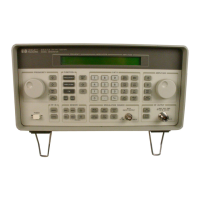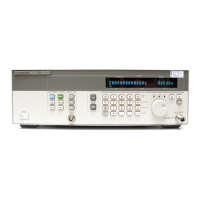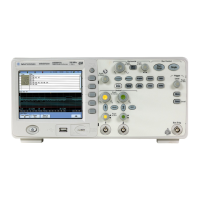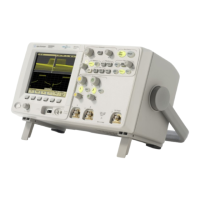53
S:\Hp8960\E1962B CDMA 2000\Pi Release\Reference Guide\Chapters\cdma2000_meas_fer_desc.fm
Frame Error Rate Measurement Description
Frame Error Rate Measurement Description
How is an FER (frame error rate) measurement made?
FER measurements are used to test the performance of a mobile station receiver.
During each FER measurement the test set sends a sequence of bits to the mobile station and the mobile
station attempts to demodulate and re-transmit the same bits back to the test set. The test set keeps a
running count of the measured frames and the number of frames that contained bit errors.
A call must be connected with a loopback service option selected (see “CALL[:CELL]:SOPTION” ) to perform
frame error rate measurements.
Intermediate measurement results are periodically available on the front panel display, but are not available
programmatically through the GPIB interface.
Confidence Level Description
Confidence level testing is a feature of FER measurements that applies statistical analysis to FER
measurements so that pass/fail test results can be obtained in the shortest possible time. When confidence
level is on, the FER measurement will keep track of the number of frames measured, the number of frame
errors, and perform a statistical analysis of the probability that the value entered in the FER requirement
field will (or will not) be exceeded.
The confidence level parameter is typically set at 95 percent. Each FER measurement will return a Pass result
before the maximum frame count is reached if statistically there is a 95 percent probability that the
percentage of frame errors would not exceed the FER requirement value if the measurement were allowed to
reach the maximum frame count. The FER measurement will return a Fail result before the maximum frame
count is reached if statistically there is a 95 percent probability that the percentage of frame errors counted
would exceed the FER requirement if the measurement were allowed to reach the maximum frame count. If
confidence level is off, or the number of frame errors counted did not result in a pass or a fail result, max
frames will be returned and the measurement result will be the FER percentage.
Several hundred frames of data must be measured before confidence limit checking can begin. A speed-up
feature, which is always active, allows the test set to end an FER measurement before reaching the minimum
number of frames required to apply confidence limit checking. The speed-up feature calculates a maximum
value of frame errors allowed before confidence limit checking begins, and ends the FER measurement with a
fail indication if this limit is exceeded.
Input Signal Requirements
The FER measurement meets or exceeds specifications when the following requirements are met:
• The frequency of the signal being measured must be in the range of 412 MHz to 483 MHz, 800 MHz to 960
MHz, or 1.7 GHz to 2.0 GHz, and within 100 kHz of the expected frequency.
• The signal level into the test set’s RF IN/OUT connector must be in the range of -25 dBm to +37 dBm, and
within 9 dBm of the expected input power (see “RFANalyzer:AUTO:POWer[:SELected]?” to meet
specifications.

